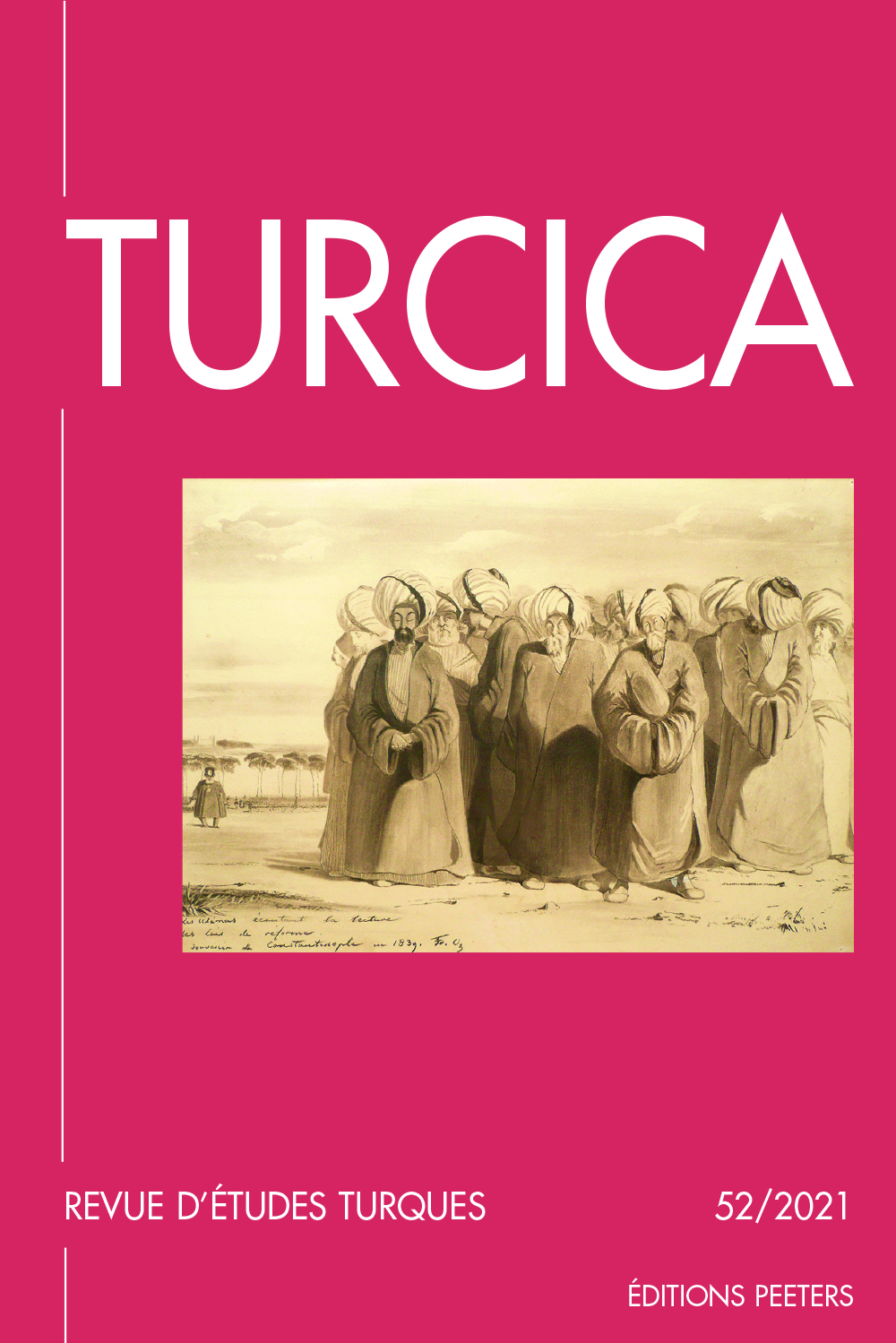 previous article in this issue previous article in this issue | next article in this issue  |

Preview first page |
Document Details : Title: The Representation of the Prophet Abraham in the Halīlnāme Author(s): DURAK, Ahmet Cem Journal: Turcica Volume: 52 Date: 2021 Pages: 15-62 DOI: 10.2143/TURC.52.0.3289807 Abstract : This article examines the sources of an early Ottoman hagiography that narrates Prophet Abraham’s biography and what these sources can tell us about the Islamic intellectual life of medieval Anatolia. The Halīlnāme stands as a unique literary work in the Ottoman historiography with its choice of Prophet Abraham as its protagonist. The choice of the author who is under the patronage of the grand vizier of Sultan Mehmed I illustrates the court’s mentality of placing Ottoman Dynasty in a wider universal history in post-Timurid Anatolia. As a religious text, the Halīlnāme presents an ubi sunt pattern to its audience: even if Abraham is no longer there, he still represents a model for Muslims. The ḳiṣāṣ al-anbiyā᾿ genre is known to include isrā᾿īliyyāt, and in this article, I am examining how ‘Abdülvāsi‘ associated these sources with his age and Ottomans. Abraham with other prophets and some ancient Persian mythological kings named in the Halīlnāme are presented as archetypic heroes of justice and piety. Their endeavors such as enforcing justice and producing wealth were to be followed by Sultan Mehmed I and Bayezid Pasha. ‘Abdülvāsi‘ relies on isrā᾿īliyyāt mostly found in classical ḳiṣāṣ al-anbiyā᾿ books and a tafsīr named Al-Kashshāf to develop his Abraham legend. His sources illustrate the medieval Ottoman author’s literature knowledge. Cet article étudie les sources d’une hagiographie ottomane ancienne consacrée à la biographie du prophète Abraham et s’interroge sur que ces sources peuvent nous apprendre sur la vie intellectuelle islamique en Anatolie médiévale. Le Halīlnāme est un cas littéraire unique dans l’historiographie ottomane par le choix du prophète Abraham comme protagoniste. Ce choix fait par un auteur qui était un client du grand-vizir de Mehmed Ier est une illustration de la mentalité de la cour ottomane dans la mesure où il situe la dynastie ottomane dans une histoire universelle plus large dans l’Anatolie post-timouride. En tant que texte religieux, le Halīlnāme offre à son audience un motif d’ubi sunt: même si Abraham n’est plus présent, il demeure un modèle pour les musulmans. Le genre des ḳiṣāṣ al-anbiyā᾿ est connu pour inclure les isrā᾿īliyyāt: dans le présent article, j’étudie la manière dont ‘Abdülvāsi‘ associe ces sources à son époque et aux Ottomans. Abraham, ainsi que d’autres prophètes et quelques anciens rois persans mythologiques, sont présentés comme des héros archétypiques de la justice et la piété. Leurs efforts, par exemple pour appliquer la justice et procurer la richesse, doivent être suivis par le sultan Mehmed Ier et Bayezid Paşa. Pour développer sa légende d’Abraham, ‘Abdülvāsi‘ se fonde sur des isrā᾿īliyyāt trouvés principalement dans des ouvrages classiques de ḳiṣāṣ al-anbiyā᾿ et un tafsīr intitulé Al-Kashshāf. Ses sources renseignent sur la culture littéraire de cet auteur ottoman médiéval. |
 |


